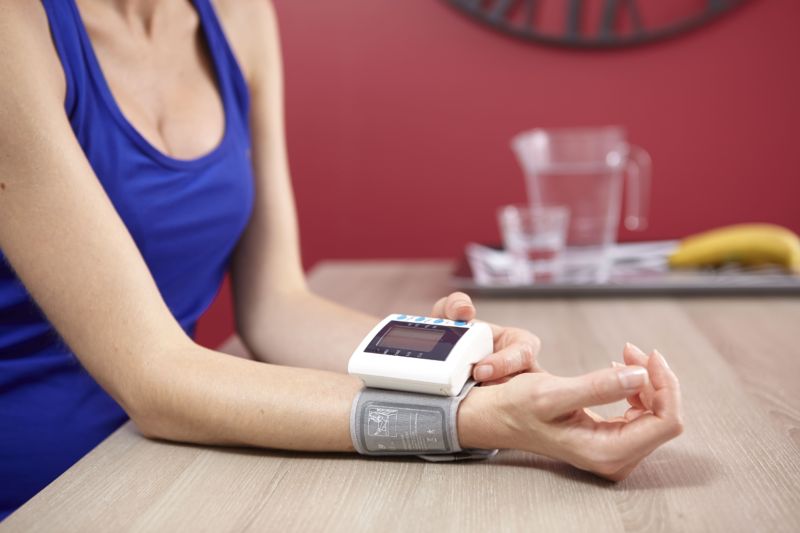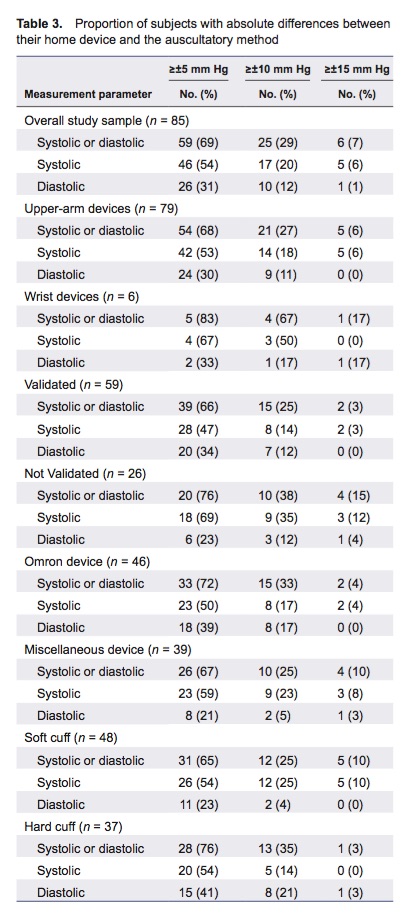






- Total
- General
- Arts
- Book
- Culture
- Economy
- Essay
- Fun/Joke
- History
- Hobbies
- Info
- Life
- Medical
- Movie
- Music
- Nature
- News
- Notice
- Opinion
- Philosophy
- Photo
- Poem
- Politics
- Science
- Sports
- Travel
Medical [Medical]70% of Home BP Devices are Inaccurate.
2017.06.09 12:31
Monitoring your blood pressure? Careful, 70% of home devices may be inaccurate
 Beth Mole
Beth Mole- 06/9/2017

Enlarge / Woman measuring her blood pressure.
Millions of people stand to benefit from closely monitoring their blood pressure—those suffering with heart disease, diabetes, kidney disease, and pregnancy-induced hypertension, for instance, plus those who just stress in doctors’ offices and can’t get accurate readings. Yet the gadgets available for home use may not be up to the task.
In a study out this week, about 70 percent of home blood-pressure devices tested were off by 5 mmHg or more. That’s enough to throw off clinical decisions, such as stopping or starting medication. Nearly 30 percent were off by 10 mmHg or more, including many devices that had been validated by regulatory agencies. The findings, published in The American Journal of Hypertension, suggest that consumers should be cautious about picking out and using such devices—and device manufacturers need to step up their game.
“We were a little surprised to see 70 percent,” lead author Raj Padwal told Ars. Dr. Padwal is a professor of medicine at the University of Alberta. He and his colleagues went into the study expecting to find problems with some devices, he admitted. “We thought maybe it would be 40 maybe—maybe 50—but 70 was a lot. That was disappointing.”
What doesn’t kill you
The researchers had hints from previous data that many blood-pressure monitors were not spot on. Their skepticism was heightened by how the devices have been tested and regulated. Companies often validate their devices by testing them on healthy adults, Padwal and his colleagues point out. But the people using them at home often have conditions that make measuring blood pressure particularly tricky, like obesity, stiffened arteries, or widened pulse pressure. Nevertheless, the devices can be cleared by regulatory agencies, such as the US Food and Drug Administration. And that, too, can be misleading.
People think that if a regulatory agency has signed off on one of these devices, that it must be good and accurate, Padwal said. “But what physicians and patients and the public don’t know is that regulatory bodies like the FDA, they don’t actually do much,” he explains. “As long as the device is not going to kill you, they’re happy.”
Ars reached out to the FDA about the matter. A spokesperson confirmed that, while the FDA does oversee the devices, the administration doesn’t approve them. “These devices are considered Class II devices requiring premarket clearance (not approval) by the FDA,” the spokesperson explained in an e-mail. The premarket clearance only demonstrates that the device “is at least as safe and effective, that is, substantially equivalent, to a legally marketed device for the same intended use.” In respect to accuracy, the agency only offers a guidance document for manufacturers.
Padwal and colleagues set out to test the accuracy of the devices themselves. Funded by the University of Alberta Hospital Foundation, they compared the home blood-pressure monitors of 85 patients with a gold-standard blood-pressure measurement technique. The patients’ monitors varied by type, age, and validation-status. But they all used an automated oscillometric method, which measures oscillations in the brachial artery and uses an algorithm to calculate blood pressure. The gold-standard method was the old-school auscultatory method, which involves the arm-squeezing sphygmomanometer and a clinician listening for thumps with a stethoscope.
Data squeeze

For each study participant, the researchers took nine sequential blood pressure readings, switching between using the standard auscultatory method and the home monitors. For the auscultatory method, the researchers had two trained health professionals involved in the measurement, one taking it and another observing. If they disagreed on a measurement by more than 4 mmHg, they tossed the data and took the measurement again. With breaks in between each reading, the whole process usually took about 45 minutes per patient.
Of the 85 home devices, 59 were inaccurate by 5 mmHg or more in either their systolic (the top number that’s the maximum pressure of a heart beat) or diastolic (the bottom number that’s the minimum between-beat pressure). That’s 69 percent inaccurate. Of those, 25 (or 29 percent) were off by 10 mmHg or more. And six devices (seven percent) were off by 15 mmHg or more.
Parsing the data further, the researchers found that devices that were validated were more often accurate than those that weren’t (34 percent accurate within 5 mmHg vs. 24 percent, respectively). Devices that used upper arm cuffs were better than those using wrist cuffs (32 percent accurate vs. 17 percent). And those with soft cuffs tended to be more accurate than those with hard cuffs (35 percent vs. 24 percent). Interestingly, the older devices tended to be more accurate than the newer ones.
Manufacturers really need to work on making these more accurate, Padwal argues. Five or ten off is just not good enough. He’s doing more research now to try to figure out how to improve the algorithms that the oscillometric devices use. “Lots of work needs to be done,” he added. In the meantime, he advises patients to go for a validated device with an arm cuff that fits properly—that’s key to them measuring correctly, he emphasizes. He also recommends taking several readings in a row to make sure.
American Journal of Hypertension, 2017. DOI: 10.1093/ajh/hpx041 (About DOIs).
Comment 3
-
My home BP measurements always seem to be higher,
compared to those at doctor's office by about 10-20.
It seems to happen even when I use stethoscope at home.
Being at the borderline BP, this difference bothers me very much.
-
If I were you, first I would make sure the BP cuff and the stethoscope I am using are working properly and
preferably are the same ones your trusted physician is using in his office.
I would take my BP cuff and stethoscope to the doctor's office and take my BP
just before he takes the BP on me so that I can compare directly his BP cuff with mine.
It is a common problem that defective cuffs and stethoscopes are generating false BPs.
You could ask your personal physician order a BP cuff and/or a stethoscope through his vendor to the office
and reimburse the cost.
It will cost you $200 or so for the BP cuff alone.
The stethoscope may cost another $200.
Most nurses use the free cheap stethoscopes which are not as reliable as the ones MDs use.
| No. | Subject | Date | Author | Last Update | Views |
|---|---|---|---|---|---|
| Notice | How to write your comments onto a webpage [2] | 2016.07.06 | 운영자 | 2016.11.20 | 18193 |
| Notice | How to Upload Pictures in webpages | 2016.07.06 | 운영자 | 2018.10.19 | 32343 |
| Notice | How to use Rich Text Editor [3] | 2016.06.28 | 운영자 | 2018.10.19 | 5920 |
| Notice | How to Write a Webpage | 2016.06.28 | 운영자 | 2020.12.23 | 43838 |
| 8842 | 훈민정음의 비밀 [4] | 2024.04.25 | 운영자 | 2024.04.29 | 49 |
| 8841 | 부산정치파동과 미국의 이승만 제거계획 | 2024.04.25 | 온기철*71 | 2024.04.25 | 18 |
| 8840 | 코너킥으로 웃었다... 황선홍호, 일본 제압하고 8강으로 [5] | 2024.04.22 | 황규정*65 | 2024.04.25 | 29 |
| 8839 | [시조]懷古歌: 회고가 [1] | 2024.04.21 | 정관호*63 | 2024.04.21 | 10 |
| 8838 | 부산형무소 살해사건 | 2024.04.20 | 온기철*71 | 2024.04.20 | 17 |
| 8837 | 육군 방첩대. 미군 CIC, 그리고 김창룡 | 2024.04.17 | 온기철*71 | 2024.04.25 | 20 |
| 8836 | 김구의 일생과 암살의 원인 | 2024.04.14 | 온기철*71 | 2024.04.25 | 18 |
| 8835 | OPERA MIGNON: Connais tu le pays [1] | 2024.04.12 | 정관호*63 | 2024.04.12 | 25 |
| 8834 | “쏘니,너와 함께 뛴건 행운!”, 400경기 감동 축하영상 [5] | 2024.04.06 | 황규정*65 | 2024.04.22 | 33 |
| 8833 | 길에서 만난 한식 [1] | 2024.04.03 | 정관호*63 | 2024.04.09 | 33 |
| 8832 |
돌아오는 기러기
[1] | 2024.03.27 | 정관호*63 | 2024.04.18 | 46 |
| 8831 | 이강인-손흥민 ‘골 합작’ 한국, 태국 3-0 완승…월드컵 최종 예선 진출 성큼 [2] | 2024.03.26 | 황규정*65 | 2024.03.27 | 43 |
| 8830 | 1945년 8월 15일 오후 강릉 홍제정 안마을에서 [2] | 2024.03.19 | 정관호*63 | 2024.03.24 | 76 |
| 8829 | 이승만은 왜 김구를 제거 했을까? [1] | 2024.03.17 | 온기철*71 | 2024.03.18 | 52 |
| 8828 | My Grandson [1] | 2024.03.15 | 노영일*68 | 2024.03.18 | 107 |
| 8827 | 蜀相(촉상): 촉한 승상 제갈량 [1] | 2024.03.15 | 정관호*63 | 2024.04.12 | 59 |
| 8826 | 1945년 8월15일에는 서울에 아무일도 없었다. [1] | 2024.03.13 | 온기철*71 | 2024.03.14 | 53 |
| 8825 | 왕소군 고향에서 [1] | 2024.03.08 | 정관호*63 | 2024.03.20 | 57 |
| 8824 | 정약용; 늙어가면 친구가 점점 없어진다. [5] | 2024.03.06 | 온기철*71 | 2024.03.08 | 86 |
| 8823 | Trump is OK to be a candidate. | 2024.03.04 | 온기철*71 | 2024.03.17 | 55 |



This subject was covered previously by me on this page,
yet it is important enough to be further emphasized to be aware of.
This is a serious issue I struggled with for many years before I retired in 2014.
I spent countless hours educating not only my patients but also alerting other MDs and nurses.